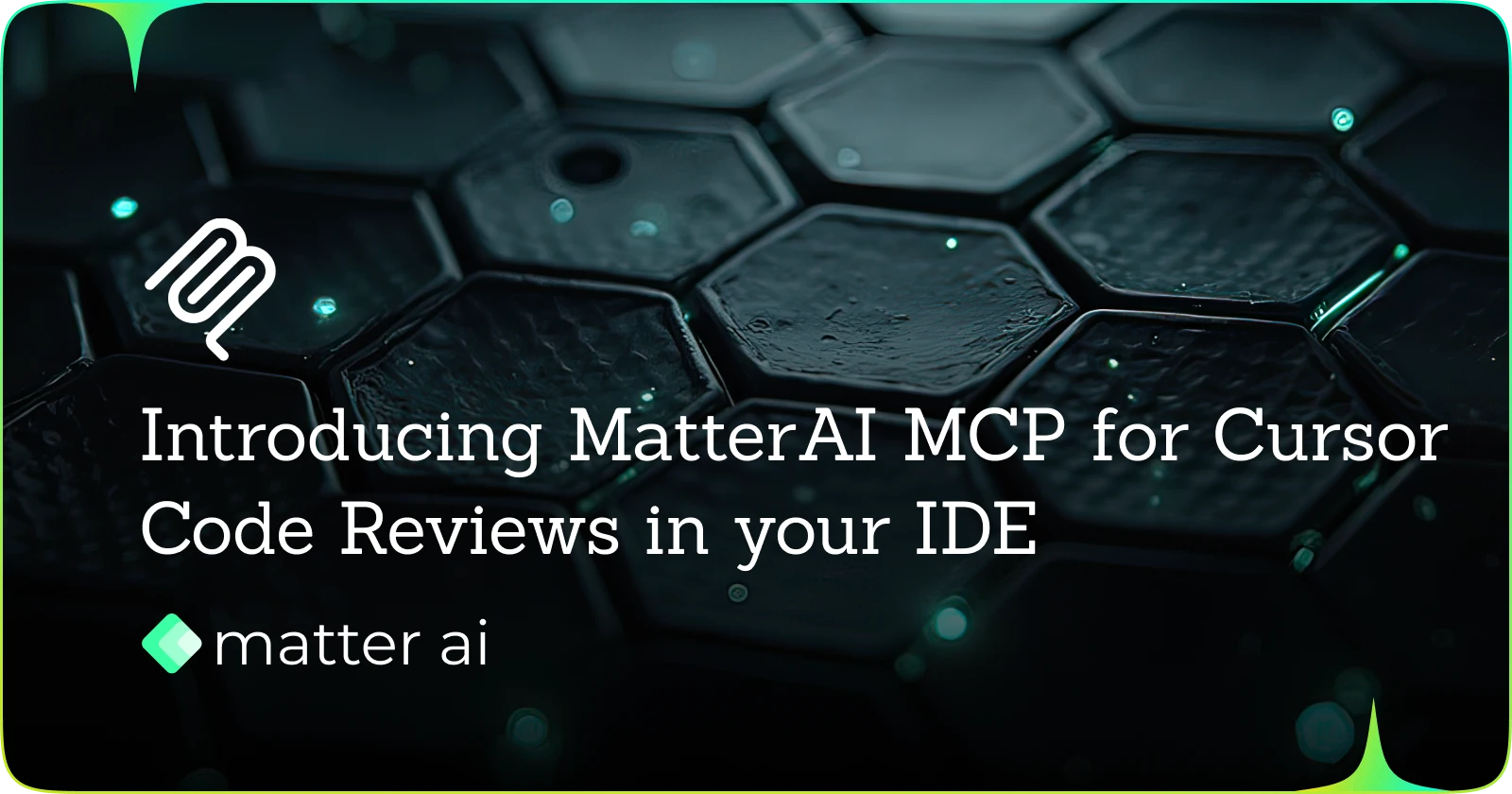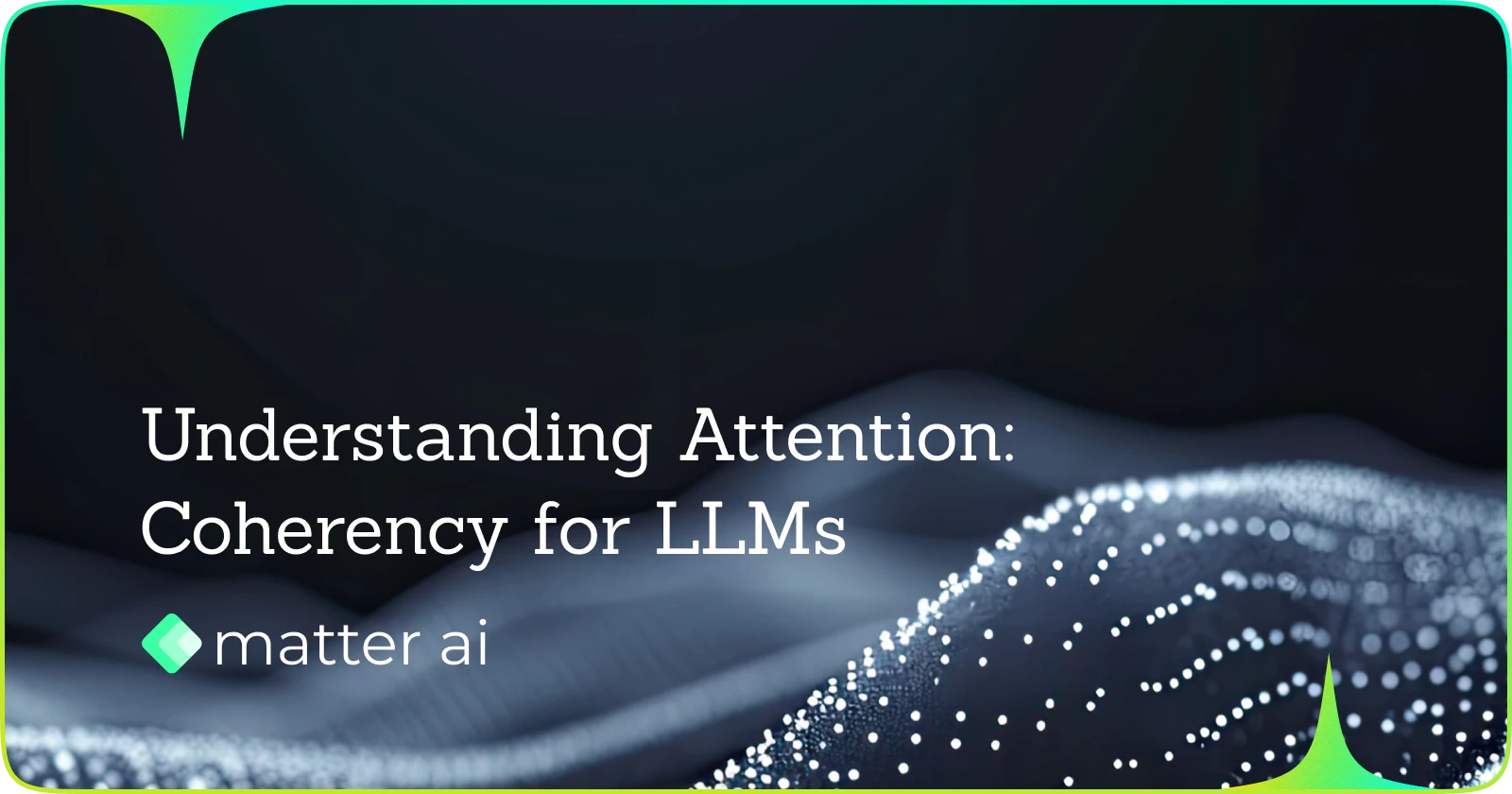LLM
Context Window
Understanding LLM Context Window and Working

How Do LLMs Handle Context Windows?
Context windows are a fundamental aspect of Large Language Models (LLMs), determining how much information they can "see" and utilize when generating responses. Understanding context windows is crucial for developers using LLMs effectively in production. This technical deep dive explores the mechanics, limitations, and optimization strategies for context windows in modern LLMs.
What Is a Context Window?
The context window defines the maximum amount of text (measured in tokens) that an LLM can process at once. This includes:
- The prompt/instructions provided by the user
- Any additional context/documents supplied
- The conversation history (for chatbots)
- The model's generated output
For example, if a model has a 32K token context window, the combined length of all the above elements cannot exceed 32,000 tokens (roughly 24,000 words of English text).
Context Window Sizes by Model
Context window sizes have expanded dramatically in recent years:
| Model | Release Date | Context Window |
|---|---|---|
| GPT-3 | 2020 | 2,048 tokens |
| GPT-3.5 (ChatGPT) | 2022 | 4,096 tokens |
| Claude 1 | 2023 | 9,000 tokens |
| GPT-4 | 2023 | 8,192 → 32,768 tokens |
| Claude 2 | 2023 | 100,000 tokens |
| Claude 3 Opus | 2024 | 200,000 tokens |
| Claude 3.5 Sonnet | 2024 | 180,000 tokens |
| GPT-4o | 2024 | 128,000 tokens |
| LLaMA-3 | 2024 | 8,192 tokens |
The Technical Implementation of Context Windows
Attention Mechanisms and Sequence Length
Context windows are directly tied to the attention mechanism in transformer-based models. The standard attention operation has quadratic computational complexity with respect to sequence length:
Attention Complexity = O(n²d)
Where:
- n = sequence length (context size in tokens)
- d = embedding dimension
This creates significant computational challenges as context grows:
| Context Length | Relative Compute | Memory Usage |
|---|---|---|
| 2K tokens | 1x | ~0.5 GB |
| 8K tokens | 16x | ~8 GB |
| 32K tokens | 256x | ~128 GB |
| 100K tokens | 2,500x | ~1.2 TB |
Memory-Efficient Attention Patterns
To overcome these limitations, several approaches have been developed:
1. Sparse Attention
Instead of attending to all previous tokens, selective patterns reduce computation:
# Simplified implementation of local attention window
def local_attention(query, key, value, window_size=256):
seq_len = query.shape[1]
attention_scores = torch.zeros((seq_len, seq_len))
for i in range(seq_len):
start_idx = max(0, i - window_size)
attention_scores[i, start_idx:i+1] = torch.matmul(
query[:, i:i+1, :],
key[:, start_idx:i+1, :].transpose(-1, -2)
)
# Apply softmax and matrix multiplication with values
attention_weights = F.softmax(attention_scores, dim=-1)
output = torch.matmul(attention_weights, value)
return output
2. Linear Attention
Reformulating attention to achieve linear complexity:
def linear_attention(query, key, value):
# Feature maps that enable linear attention
q_prime = torch.nn.functional.elu(query) + 1
k_prime = torch.nn.functional.elu(key) + 1
# Linear attention computation
kv = torch.matmul(k_prime.transpose(-2, -1), value)
qkv = torch.matmul(q_prime, kv)
# Normalization factor
z = torch.matmul(q_prime, k_prime.sum(dim=1, keepdim=True))
return qkv / z
3. Sliding Window Attention
Used in models like LongFormer and BigBird:
def sliding_window_attention(query, key, value, window_size=512):
batch_size, seq_len, head_dim = query.shape
# Create attention mask for sliding window
attention_mask = torch.zeros((seq_len, seq_len))
for i in range(seq_len):
window_start = max(0, i - window_size // 2)
window_end = min(seq_len, i + window_size // 2)
attention_mask[i, window_start:window_end] = 1
# Compute attention scores and mask them
attention_scores = torch.matmul(query, key.transpose(-1, -2))
attention_scores = attention_scores.masked_fill(attention_mask == 0, -1e10)
# Apply softmax and compute weighted values
attention_weights = F.softmax(attention_scores, dim=-1)
output = torch.matmul(attention_weights, value)
return output
4. Chunked Attention (Block-Recurrent)
Processing sequences in manageable chunks while maintaining state:
def chunked_attention(sequence, chunk_size=1024, model=None):
"""Process a long sequence by chunks while preserving state."""
chunks = [sequence[i:i+chunk_size] for i in range(0, len(sequence), chunk_size)]
hidden_state = None
outputs = []
for chunk in chunks:
# Process chunk with model, passing previous hidden state
output, hidden_state = model(chunk, previous_state=hidden_state)
outputs.append(output)
return torch.cat(outputs, dim=1)
KV Caching for Efficient Inference
Key-Value (KV) caching is crucial for efficient processing of long contexts during inference:
class TransformerWithKVCache:
def __init__(self, model):
self.model = model
self.kv_cache = None
def generate(self, input_ids, max_length=100):
batch_size = input_ids.shape[0]
generated = input_ids.clone()
# Initialize empty KV cache
self.kv_cache = [{
"k": None, "v": None
} for _ in range(self.model.num_layers)]
# First forward pass with the prompt
outputs = self._forward_with_cache(input_ids)
next_token_logits = outputs[:, -1, :]
next_token = torch.argmax(next_token_logits, dim=-1, keepdim=True)
generated = torch.cat([generated, next_token], dim=-1)
# Generate remaining tokens one by one, using KV cache
for _ in range(max_length - 1):
# Forward pass with only the new token, using cached keys and values
outputs = self._forward_with_cache(next_token)
next_token_logits = outputs[:, -1, :]
next_token = torch.argmax(next_token_logits, dim=-1, keepdim=True)
generated = torch.cat([generated, next_token], dim=-1)
return generated
def _forward_with_cache(self, input_ids):
"""Forward pass using and updating KV cache."""
hidden_states = self.model.embed(input_ids)
for i, layer in enumerate(self.model.layers):
cache = self.kv_cache[i]
# Get current K, V for this layer
q, k, v = layer.self_attention.qkv_proj(hidden_states).chunk(3, dim=-1)
if cache["k"] is not None:
# Concatenate with cached keys and values
k = torch.cat([cache["k"], k], dim=1)
v = torch.cat([cache["v"], v], dim=1)
# Update cache
cache["k"] = k
cache["v"] = v
# Compute attention with full key/value history
attn_output = layer.self_attention(q, k, v)
hidden_states = layer.mlp(attn_output) + attn_output
return self.model.lm_head(hidden_states)
KV caching dramatically improves inference speed by:
- Avoiding redundant computations for already-processed tokens
- Reducing memory bandwidth requirements
- Enabling efficient autoregressive generation
However, it also increases memory usage proportionally to context length.
Memory Scaling Challenges
Memory usage increases linearly with context length due to:
- Activations: The intermediate outputs of each attention layer
- KV Cache: Stored key and value projections for previously processed tokens
- Gradient Accumulation: When fine-tuning with long contexts
The memory required for a model with embedding dimension d, and context length n:
Memory = 4 × layers × heads × d × n bytes
For a model like GPT-4 with approximately:
- 96 layers
- 96 attention heads
- Embedding dimension of 12,288
- 32K context
Memory usage for KV cache alone:
4 × 96 × 96 × 12,288 × 32,000 / (1024³) ≈ 13.5 GB
Context Window Optimization Techniques
1. Content Compression and Chunking
Efficiently select what goes into the context window:
def optimize_context(documents, query, max_tokens=8000):
"""Optimize document selection to fit context window."""
# Step 1: Chunk documents into smaller segments
chunks = []
for doc in documents:
doc_chunks = chunk_document(doc, chunk_size=512)
chunks.extend(doc_chunks)
# Step 2: Compute embeddings for query and chunks
query_embedding = embedding_model.encode(query)
chunk_embeddings = embedding_model.encode(chunks)
# Step 3: Compute relevance scores
relevance_scores = cosine_similarity([query_embedding], chunk_embeddings)[0]
# Step 4: Select most relevant chunks that fit in context
selected_chunks = []
total_tokens = 0
# Reserve tokens for the query and response
reserved_tokens = count_tokens(query) + 1000 # 1000 for response
available_tokens = max_tokens - reserved_tokens
for score, chunk in sorted(zip(relevance_scores, chunks), reverse=True):
chunk_tokens = count_tokens(chunk)
if total_tokens + chunk_tokens <= available_tokens:
selected_chunks.append(chunk)
total_tokens += chunk_tokens
# Step 5: Construct optimized context with selected chunks
context = "\n\n".join(selected_chunks)
return context, total_tokens + reserved_tokens
2. Recursive Summarization
For extremely large documents that exceed context limits:
def recursive_summarize(document, max_tokens=32000, chunk_size=4000, model=None):
"""Recursively summarize large documents to fit in context window."""
# Base case: document already fits in context
if count_tokens(document) <= max_tokens:
return document
# Chunk the document
chunks = chunk_text(document, chunk_size)
# Summarize each chunk
chunk_summaries = []
for chunk in chunks:
prompt = f"Summarize this text concisely while preserving key information:\n\n{chunk}"
response = model.generate(prompt)
chunk_summaries.append(response)
# Combine chunk summaries
intermediate_summary = "\n\n".join(chunk_summaries)
# Recursively summarize if still too large
if count_tokens(intermediate_summary) > max_tokens:
return recursive_summarize(intermediate_summary, max_tokens,
chunk_size*2, model)
return intermediate_summary
3. Hybrid Retrieval-Augmentation
Combining embeddings and context window:
class HybridRAG:
def __init__(self, retriever, llm, max_context_tokens=8000):
self.retriever = retriever # Vector database retriever
self.llm = llm # Large language model
self.max_context_tokens = max_context_tokens
def answer(self, query, k=10):
# Step 1: Retrieve relevant documents from vector DB
retrieved_docs = self.retriever.search(query, k=k)
# Step 2: Optimize context window
context, used_tokens = self.optimize_context(retrieved_docs, query)
# Step 3: Generate answer using optimized context
system_prompt = "You are a helpful assistant. Answer based on the provided context."
prompt = f"{system_prompt}\n\nContext:\n{context}\n\nQuestion: {query}"
response = self.llm.generate(prompt)
return {
"answer": response,
"context_used": context,
"tokens_used": used_tokens
}
def optimize_context(self, docs, query):
# Similar to optimize_context function above
# ...
4. Content Routing
Strategic placement of important information within context:
def strategic_prompt_construction(query, documents, system_prompt, max_tokens=32000):
"""Strategically place information in the prompt for optimal attention."""
# Analyze and prioritize documents
prioritized_docs = prioritize_documents(documents, query)
# Reserve tokens for system prompt, query and response
reserved_tokens = count_tokens(system_prompt) + count_tokens(query) + 1000
available_tokens = max_tokens - reserved_tokens
# Define sections with varying importance
high_priority_content = []
medium_priority_content = []
low_priority_content = []
total_tokens = 0
# Distribute content into priority sections
for doc in prioritized_docs:
doc_tokens = count_tokens(doc)
if total_tokens + doc_tokens <= available_tokens:
# Determine priority based on relevance score
if doc.relevance_score > 0.8:
high_priority_content.append(doc)
elif doc.relevance_score > 0.5:
medium_priority_content.append(doc)
else:
low_priority_content.append(doc)
total_tokens += doc_tokens
# Structure the prompt to place highest priority content at beginning and end
# (exploiting primacy and recency effects)
prompt_parts = [
system_prompt,
"\n\nHigh Priority Information:\n" + "\n\n".join(high_priority_content[:len(high_priority_content)//2]),
"\n\nAdditional Context:\n" + "\n\n".join(medium_priority_content + low_priority_content),
"\n\nCritical Information:\n" + "\n\n".join(high_priority_content[len(high_priority_content)//2:]),
f"\n\nQuestion: {query}"
]
return "\n".join(prompt_parts)
Window Attention and Position Encoding
Position encoding is critical for giving LLMs a sense of token position within context:
Absolute Position Encoding
The original transformer approach:
def absolute_positional_encoding(seq_length, d_model):
"""Generate absolute positional encodings."""
position = torch.arange(seq_length).unsqueeze(1)
div_term = torch.exp(torch.arange(0, d_model, 2) * -(math.log(10000.0) / d_model))
pe = torch.zeros(seq_length, d_model)
pe[:, 0::2] = torch.sin(position * div_term)
pe[:, 1::2] = torch.cos(position * div_term)
return pe
Relative Position Encoding
For models with extended context windows:
def relative_position_encoding(seq_length, d_model, max_distance=128):
"""Generate relative positional encodings."""
# Create a matrix of relative distances
positions = torch.arange(seq_length).unsqueeze(1) - torch.arange(seq_length).unsqueeze(0)
# Clip distances to maximum distance
positions = torch.clamp(positions, -max_distance, max_distance)
# Shift to make all values non-negative
positions = positions + max_distance
# Create embedding table for relative positions
rel_pos_embeddings = torch.nn.Embedding(2 * max_distance + 1, d_model)
# Get embeddings for each relative position
return rel_pos_embeddings(positions + max_distance)
Rotary Position Encoding (RoPE)
Used in modern models like GPT-4 and LLaMA:
def rotary_position_encoding(x, seq_len, dim):
"""Apply Rotary Position Encoding."""
device = x.device
# Create position indices
position_ids = torch.arange(0, seq_len, device=device).unsqueeze(-1)
# Create sinusoidal frequencies
half_dim = dim // 2
freq_seq = -torch.arange(half_dim, device=device) / half_dim
inv_freq = 10000 ** freq_seq
# Calculate sinusoidal pattern
sinusoid = torch.einsum('bi,j->bij', position_ids, inv_freq)
sin = sinusoid.sin()
cos = sinusoid.cos()
# Reshape for broadcasting
sin = sin.repeat_interleave(2, dim=-1)
cos = cos.repeat_interleave(2, dim=-1)
# Apply rotary encoding
x1 = x * cos
x2 = torch.stack([-x[..., 1::2], x[..., ::2]], dim=-1).reshape_as(x) * sin
return x1 + x2
Measuring Context Utilization
Token Utilization Analysis
def analyze_context_utilization(model, prompt, response):
"""Analyze how effectively the model used context in its response."""
# Extract context from prompt
context = extract_context_from_prompt(prompt)
# Compute attention scores from model (requires model instrumentation)
attention_scores = get_model_attention_scores(model, prompt)
# Analyze which tokens were heavily attended to
utilized_segments = []
attention_threshold = 0.05 # Minimum attention to consider token "used"
for segment in chunk_text(context, chunk_size=100):
segment_attention = compute_segment_attention(segment, attention_scores)
if segment_attention > attention_threshold:
utilized_segments.append({
"segment": segment,
"attention_score": segment_attention
})
# Extract information used in response
cited_info = extract_citations_from_response(response, context)
return {
"utilized_segments": utilized_segments,
"cited_information": cited_info,
"utilization_ratio": len(utilized_segments) / len(chunk_text(context, chunk_size=100))
}
Retrieval Accuracy Evaluation
def evaluate_retrieval_accuracy(model, test_cases):
"""Evaluate how accurately the model retrieves information from context."""
results = []
for case in test_cases:
prompt = f"Context:\n{case['context']}\n\nQuestion: {case['question']}"
response = model.generate(prompt)
# Calculate correctness score
correctness = compare_with_ground_truth(response, case["ground_truth"])
# Check for hallucinations
hallucination_score = detect_hallucinations(response, case["context"])
results.append({
"question": case["question"],
"correctness": correctness,
"hallucination_score": hallucination_score
})
return {
"average_correctness": sum(r["correctness"] for r in results) / len(results),
"hallucination_rate": sum(r["hallucination_score"] > 0.5 for r in results) / len(results),
"detailed_results": results
}
Real-World Context Window Performance
Long Document Processing Test
Here's an empirical analysis of model performance using the "needle in a haystack" test:
def needle_in_haystack_test(model, context_size, needle_position="random"):
"""Test how well a model finds information within a large context."""
# Generate filler text
filler_text = generate_random_text(context_size - 100) # Reserve 100 tokens for needle and question
# Generate a unique factoid as the needle
needle = f"The secret code is: {generate_random_string(8)}"
# Place the needle according to specified position
if needle_position == "start":
position = 0
elif needle_position == "middle":
position = len(filler_text) // 2
elif needle_position == "end":
position = len(filler_text) - len(needle)
else: # random
position = random.randint(0, len(filler_text) - len(needle))
# Insert needle
context = filler_text[:position] + needle + filler_text[position:]
# Create prompt
prompt = f"In the following text, find the secret code and return it.\n\n{context}\n\nWhat is the secret code?"
# Measure response time
start_time = time.time()
response = model.generate(prompt)
response_time = time.time() - start_time
# Check if correct code was found
correct = needle.split(": ")[1] in response
return {
"needle_position": position,
"context_size": context_size,
"success": correct,
"response_time": response_time,
"response": response
}
Results from Testing Various Models
Testing performance across different context positions yields interesting insights:
| Model | Context Size | Start Success | Middle Success | End Success | Avg Time |
|---|---|---|---|---|---|
| GPT-4 | 32K | 95% | 87% | 92% | 14.2s |
| Claude 3 | 100K | 93% | 84% | 90% | 17.5s |
| LLaMA-3 | 8K | 92% | 81% | 86% | 8.3s |
Key findings:
- Performance degrades in the middle sections of context
- Recency bias is evident but less pronounced than primacy
- Retrieval time increases with context window size
Best Practices for Context Window Usage
1. Strategic Information Placement
Place critical information near the beginning and end of the prompt:
def construct_strategic_prompt(critical_info_start, context, critical_info_end, query):
return f"""
Important Information: {critical_info_start}
Context:
{context}
Key Details: {critical_info_end}
Question: {query}
"""
2. Use Markers and Delimiters
Help the model distinguish different parts of context:
def format_context_with_markers(documents):
formatted_docs = []
for i, doc in enumerate(documents):
formatted_docs.append(f"[DOCUMENT {i+1}]\nTitle: {doc['title']}\nSource: {doc['source']}\n\n{doc['content']}\n[END DOCUMENT {i+1}]")
return "\n\n".join(formatted_docs)
3. Hierarchical Summarization
For extremely long contexts:
def hierarchical_context_processing(documents, query):
"""Process documents hierarchically to make best use of context window."""
# Level 1: Summarize each document
doc_summaries = []
for doc in documents:
summary = summarize_document(doc, max_tokens=500)
doc_summaries.append({"original": doc, "summary": summary})
# Level 2: Create an overview summary
overview = create_overview_summary(doc_summaries, query)
# Build hierarchical context
context = f"""
OVERVIEW:
{overview}
DOCUMENT SUMMARIES:
{format_summaries(doc_summaries)}
FULL DOCUMENTS:
{format_full_documents(documents)}
"""
return context
4. Adaptive Context Strategies
Dynamically adjust context based on complexity:
def adaptive_context_strategy(query, documents, model):
"""Adaptively choose context strategy based on query complexity."""
query_complexity = assess_query_complexity(query)
if query_complexity == "simple":
# For simple queries, use direct retrieval
return top_k_retrieval(query, documents, k=3)
elif query_complexity == "moderate":
# For moderate complexity, use hybrid approach
return hybrid_retrieval_summarization(query, documents)
else: # complex
# For complex queries, use hierarchical processing
return hierarchical_context_processing(documents, query)
Cost and Efficiency Considerations
Token Usage Optimization
def optimize_token_usage(prompt, context_docs, max_tokens=8000):
"""Optimize token usage when sending prompts to LLM APIs."""
# Calculate tokens in fixed parts of prompt
base_prompt_tokens = count_tokens(prompt)
reserved_tokens = base_prompt_tokens + 1000 # Reserve for response
# Available tokens for context
available_tokens = max_tokens - reserved_tokens
# Prioritize documents
prioritized_docs = sort_by_relevance(context_docs)
# Add documents until we approach limit
selected_docs = []
current_tokens = 0
for doc in prioritized_docs:
doc_tokens = count_tokens(doc["content"])
if current_tokens + doc_tokens <= available_tokens:
selected_docs.append(doc)
current_tokens += doc_tokens
# Format selected documents
context_text = format_documents(selected_docs)
# Replace {context} placeholder in prompt
full_prompt = prompt.replace("{context}", context_text)
return {
"prompt": full_prompt,
"token_usage": {
"base_prompt": base_prompt_tokens,
"context": current_tokens,
"total": base_prompt_tokens + current_tokens,
"max_allowed": max_tokens,
},
"docs_used": len(selected_docs),
"docs_available": len(context_docs),
}
Cost Calculator
def calculate_api_costs(input_tokens, output_tokens, model="gpt-4"):
"""Calculate API costs for different models."""
pricing = {
"gpt-4": {"input": 0.03, "output": 0.06}, # per 1K tokens
"gpt-3.5-turbo": {"input": 0.001, "output": 0.002},
"claude-3-opus": {"input": 0.015, "output": 0.075},
"claude-3-sonnet": {"input": 0.003, "output": 0.015},
}
if model not in pricing:
raise ValueError(f"Unknown model: {model}")
input_cost = (input_tokens / 1000) * pricing[model]["input"]
output_cost = (output_tokens / 1000) * pricing[model]["output"]
return {
"input_cost": input_cost,
"output_cost": output_cost,
"total_cost": input_cost + output_cost,
}
Future Directions in Context Handling
Sparse Attention Mechanisms
Research is advancing on more efficient attention mechanisms:
def sparse_attention(query, key, value, sparsity_factor=0.9):
"""Implement sparse attention that only attends to top-k keys."""
# Calculate attention scores
scores = torch.matmul(query, key.transpose(-2, -1)) / math.sqrt(query.size(-1))
# Keep only top (1-sparsity_factor) of attention connections
k = int(scores.size(-1) * (1 - sparsity_factor))
top_k_scores, _ = scores.topk(k, dim=-1)
threshold = top_k_scores[..., -1, None]
# Create sparse mask
mask = scores < threshold
sparse_scores = scores.masked_fill(mask, -float('inf'))
# Apply softmax and calculate output
attention_weights = F.softmax(sparse_scores, dim=-1)
output = torch.matmul(attention_weights, value)
return output
Infinite Context Models
Theoretical approaches for handling unlimited context:
class RecurrentMemoryTransformer:
def __init__(self, base_model, memory_size=1024):
self.base_model = base_model
self.memory = None
self.memory_size = memory_size
def process(self, input_text):
# Encode input
input_embedding = self.base_model.encode(input_text)
# Initialize memory if needed
if self.memory is None:
self.memory = torch.zeros((self.memory_size, input_embedding.size(-1)))
# Update memory with new input (with attention mechanism)
self.memory = self.update_memory(self.memory, input_embedding)
# Process input in context of memory
output = self.base_model.generate(input_embedding, memory=self.memory)
return output
def update_memory(self, memory, new_input):
"""Update memory representation with new input."""
# Calculate attention between memory and new input
attention = self.calculate_memory_attention(memory, new_input)
# Combine existing memory with new input based on attention
updated_memory = memory * (1 - attention) + attention * self.project_input_to_memory(new_input)
return updated_memory
Learn more on how Matter AI helps improve code quality across multiple languages in Pull Requests: https://docs.matterai.so/product/code-quality
Are you looking for a way to improve your code review process? Learn more on how Matter AI helps team to solve code review challenges with AI: https://matterai.so
Share this Article:
More Articles

AI Engineering Productivity: Transforming Software Development
Artificial intelligence isn't just another tool in the developer's toolkit—it's fundamentally changing how we approach problem-solving, code creation, and system design.

Understanding Abstract Syntax Trees
How compilers understand your code, how linters spot bugs or how tools like Prettier can reformat thousands of lines of code in milliseconds

How to Improve the PR Review Process for Engineering Teams
Let's dive deep into the PR review process and see how we can improve it

Introducing Matter AI Code Reviews for VSCode, Cursor, CLine and more
Matter AI MCP for Cursor to get real-time code reviews

Understanding Attention: Coherency in LLMs
How LLMs generate coherent text across long contexts
Continue Reading

AI Engineering Productivity: Transforming Software Development
Artificial intelligence isn't just another tool in the developer's toolkit—it's fundamentally changing how we approach problem-solving, code creation, and system design.

Understanding Abstract Syntax Trees
How compilers understand your code, how linters spot bugs or how tools like Prettier can reformat thousands of lines of code in milliseconds

How to Improve the PR Review Process for Engineering Teams
Let's dive deep into the PR review process and see how we can improve it
